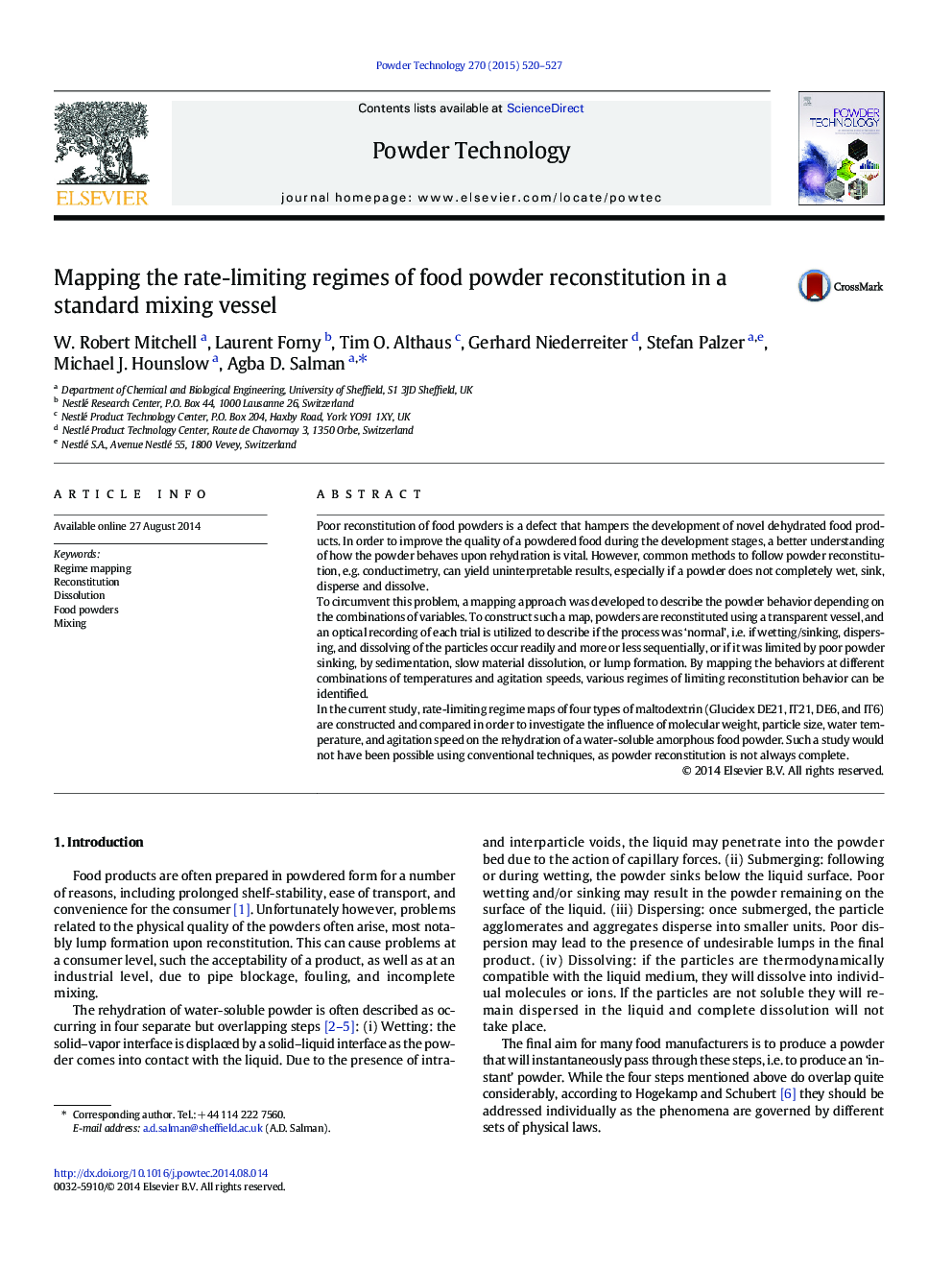| کد مقاله | کد نشریه | سال انتشار | مقاله انگلیسی | نسخه تمام متن |
|---|---|---|---|---|
| 235915 | 465652 | 2015 | 8 صفحه PDF | دانلود رایگان |
• A novel vessel was constructed to optically record powder reconstitution.
• A mapping approach is proposed to study the role of temperature and agitation speed.
• Maps for 4 powders demonstrate the influence of particle size and molecular weight.
• Such maps are a useful tool during the development of novel dehydrated products.
Poor reconstitution of food powders is a defect that hampers the development of novel dehydrated food products. In order to improve the quality of a powdered food during the development stages, a better understanding of how the powder behaves upon rehydration is vital. However, common methods to follow powder reconstitution, e.g. conductimetry, can yield uninterpretable results, especially if a powder does not completely wet, sink, disperse and dissolve.To circumvent this problem, a mapping approach was developed to describe the powder behavior depending on the combinations of variables. To construct such a map, powders are reconstituted using a transparent vessel, and an optical recording of each trial is utilized to describe if the process was ‘normal’, i.e. if wetting/sinking, dispersing, and dissolving of the particles occur readily and more or less sequentially, or if it was limited by poor powder sinking, by sedimentation, slow material dissolution, or lump formation. By mapping the behaviors at different combinations of temperatures and agitation speeds, various regimes of limiting reconstitution behavior can be identified.In the current study, rate-limiting regime maps of four types of maltodextrin (Glucidex DE21, IT21, DE6, and IT6) are constructed and compared in order to investigate the influence of molecular weight, particle size, water temperature, and agitation speed on the rehydration of a water-soluble amorphous food powder. Such a study would not have been possible using conventional techniques, as powder reconstitution is not always complete.
Figure optionsDownload as PowerPoint slide
Journal: Powder Technology - Volume 270, Part B, January 2015, Pages 520–527
